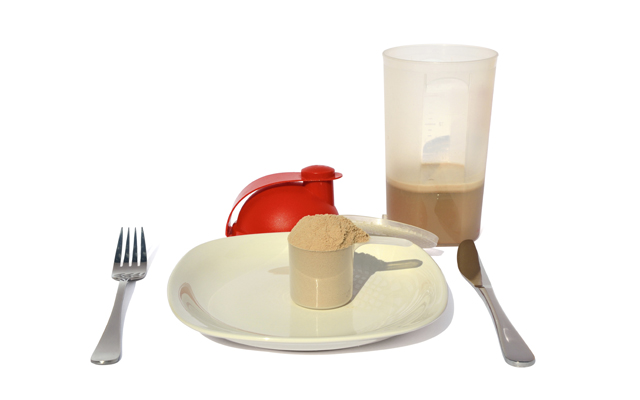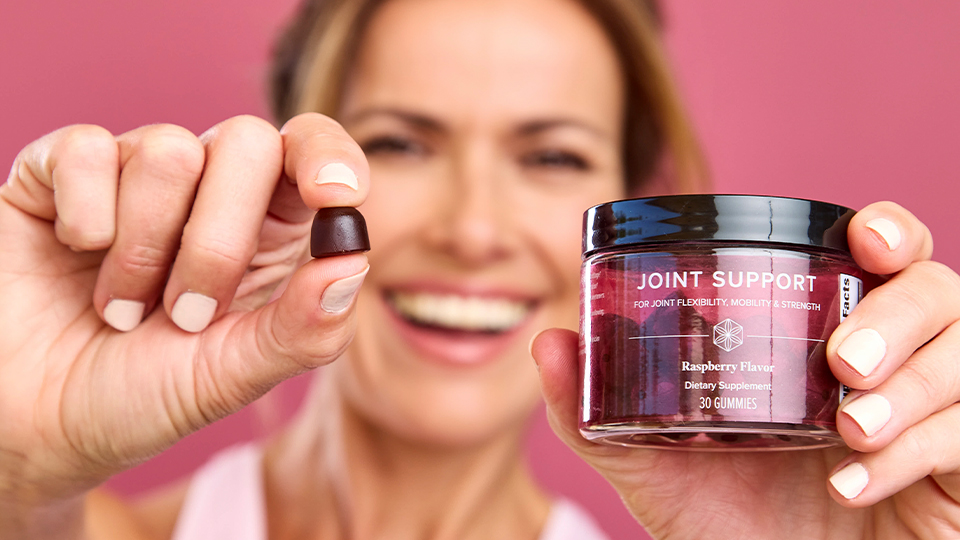For athletes on an Isagenix System, two IsaLean® or IsaLean PRO Shakes and the suggested third meal are sometimes not enough to improve performance. If you fall within this category, here are a few tips to keep in mind when making adjustments to your nutrition plan.
Simply put, athletes need more calories. This is especially true when an athlete is working toward lean body mass gains. However, not all athletes need the same kind of nutrition. The plan that works for a high school football player will not have the same success as a plan geared toward a female triathlete.
Eating more frequently, choosing nutrient-rich foods, drinking shakes, and having the occasional snack or treat can help add responsible and purposeful calories to your day. You’ll want to start with establishing your protein, carbohydrate, and fat needs. Calories obviously count, but so do nutrients.
Here are some key things to remember as you build your nutrition plan:
1. Put protein quality first. Fueling your body with high-quality protein from whey, eggs, and lean meats is going to aid you much more than low-quality protein powders or fatty meats. For athletes, the general recommendation is 1.4 to 2.0 grams of protein per kilogram of bodyweight. These amounts are comparable to those recommended by the American Dietetic Association, American College of Sports Medicine, and the International Society of Sports Nutrition (1, 2).
2. Disperse nutrients throughout the day. Try to consume two to three nutrient-dense meals and two to three IsaLean or IsaLean PRO Shakes throughout the day. As an athlete, you need more energy during the day due to your activity level, age, and muscle mass (3). This can be achieved by eating nutrient-dense foods between main meals, which help improve overall diet quality (4).
3. Construct meals around phytonutrient-rich vegetables, quality carbohydrates, and lean proteins. While many coaches recommend simply boosting caloric intake with little care about the quality of those calories, you as an athlete ought to know better. Adding micronutrient-rich fruit, heart-healthy nut butters, and complex carbohydrates like oats to your shake will go a long way toward building lean muscle and providing good nutrition. When planning other meals, start with choosing a lean protein source like chicken breast or grass-fed, lean ground beef and round out the meal with colorful vegetables and a complex carbohydrate.
4. Don’t forget fat. Fats should never be neglected in meals, but they should be kept in moderation. The fat profiles found in olive oil, avocado, salmon, nuts, and seeds are key in supporting a healthy metabolism. It’s also important to keep in mind the essential fatty acids such as omega-3 fatty acids, DHA and EPA that the body cannot produce by itself. In this instance a high-quality supplement will help fill in nutritional gaps.
5. Don’t neglect protein around training. Whey protein is the best choice when it comes to increasing muscle tone and time to fatigue (5-6). For most workout sessions, the period of time after the workout is an important “window” to be sure to get high-quality whey protein and maximize muscle building.
Different goals will necessitate different regimens. Here are a few examples of how regimens could be structured based on different goals, but remember that these are purely examples and will likely require some adjustments based on individual needs:
120-pound Active Female:
| Protein needs: | 80 to 110 grams of protein |
| Activity: | Running five to six times per week and three days of resistance training |
| Goal: | Maintaining current muscle mass and improving half marathon time |
Sample meal plan:
| Protein | Carbohydrate | Fat | Supplement | |
| Breakfast | 2 hard-boiled eggs | ¾ cup oatmeal (dry measured) and handful sliced strawberries *Cinnamon and Stevia to taste | 1 tbsp. flax | |
| Before morning workout | 1 scoop AMPED™ Power and 1 e+™ Energy Shot | |||
| Post-workout | 1 scoop IsaPro® | 1 banana | ||
| Lunch | 3 oz. chicken | Green leafy salad 1 small sweet potato | 2 tbsp. olive oil-based dressing | |
| Mid-afternoon | Strawberry Cream IsaLean Shake | |||
| Dinner | 3 – 4 oz. salmon | Cold beet and kale salad |
Takeaway:
Notice how protein is spread out over the day to achieve optimal muscle synthesis. The carbohydrate intake is around the workout period when the body needs fuel before the workout. IsaPro is a great choice for replenishment after a workout. Good fats are dispersed over the day to ensure needs are covered. Finally, nutrient-rich foods are used with fat sources to ensure better absorption and digestion. For example, some of the vitamins found in sweet potatoes and kale need fat to be absorbed. This is why olive oil and the oils found in salmon are included.
170-pound Active Male:
| Protein needs: | 110 to 155 grams of protein |
| Activity: | Intense weightlifting five times per week, high-intensity interval training three times per week, and golf on the weekends |
| Goal: | Stay fit, toned, and healthy while adding lean muscle mass |
Sample meal plan:
| Protein | Carbohydrate | Fat | Supplement | |
| Breakfast | 1 scoop IsaPro mixed with milk (poured over granola) | Medium bowl of granola with a handful of blueberries | ||
| Snack | 1 apple | IsaLean PRO Shake | ||
| Lunch | 4 oz. grilled chicken | Diced bell peppers, with brown rice pasta and marinara sauce | ||
| Before afternoon workout | 1 scoop AMPED Power and 1 e+ Energy Shot | |||
| Post-workout | 1 scoop IsaPro | |||
| Dinner (one to two hours after IsaPro) | 4 oz. sautéed shrimp | Stir fry of snap peas, cabbage, carrots, broccoli, and add to quinoa |
Takeaway:
Protein needs are higher in this example so IsaLean PRO is included along with larger amounts of protein throughout the day. Before training, a good source of easily digested protein such as whey protein and slower-digesting carbohydrates should be consumed roughly two hours prior to exercise. In this particular case, IsaPro should be taken alone right after training since athletes replace those calories with dinner after a workout. This is also the reason for larger amounts of carbohydrates at dinner time. For one extra dose of protein before bed, try a cup of low-fat Greek yogurt to support muscle building and metabolism.
140-pound Teenager:
| Protein needs: | 100 to 150 grams of protein (based on target weight) |
| Activity: | High school football plus lifting four times per week |
| Goal: | Looking to add lean muscle mass and improve speed |
Sample meal plan:
| Protein | Carbohydrate | Fat | Supplement | |
| Breakfast | Oatmeal with 1 tbsp. honey or molasses | 2 tbsp. nut butter | IsaLean Shake | |
| Morning practice | Replenish™ | |||
| Post-workout | 1 scoop IsaPro | 1 cinnamon raisin bagel | ||
| Lunch | Chicken teriyaki | Brown rice and broccoli | ||
| Mid-afternoon | Peanut butter and banana sandwich on sprouted grain bread | Strawberry Cream IsaLean Shake | ||
| Evening team lift | Replenish | |||
| Post-workout | 1 scoop IsaPro | |||
| Dinner | Turkey chili | Brown rice | Guacamole |
Takeaway:
Protein needs in this example are based on the goal weight. Calorie intake will exceed needs for this teenager to encourage muscle gain. Although calories are in excess, they are coming from nutrient-packed foods to ensure gain of lean body mass and not fat. Since this example is for a high school athlete, convenience is key. Having options like IsaLean Shakes, sandwiches, and stir-fry dishes made the night before are easy to pack and easy to eat. Another important and often neglected diet focus area is hydration. High school athletes need to receive plenty of fluids daily to ensure proper nutrient delivery and metabolism benefits for their still developing bodies. Replenish provides key electrolytes, vitamins, and hydration and actually encourages increased fluid intake—without the high levels of sugar.
References
- Campbell B, Kreider RB, Ziegenfuss T, La Bounty P, Roberts M, Burke D, Antonio J. 2007. International Society of Sports Nutrition position stand: protein and exercise. J Inter Soc Sports Nutr, 4(8), 8.
- Rodriguez NR, DiMarco NM, Langley S. 2009. Position of the American dietetic association, dietitians of Canada, and the American college of sports medicine: nutrition and athletic performance. J Amer Diet Assoc, 109(3), 509-527.
- Mamerow MM, Mettler JA, English KL, Casperson SL, Arentson-Lantz E, Sheffield-Moore M, Paddon-Jones D. 2014. Dietary protein distribution positively influences 24-h muscle protein synthesis in healthy adults. J Nutr, 144(6), 876-880.
- Zizza CA, Xu B. 2012. Snacking is associated with overall diet quality among adults. J Acad Nutr and Diet, 112(2), 291-296.
- Ivy JL. 2004. Regulation of muscle glycogen repletion, muscle protein synthesis and repair following exercise. J Sports Sci Med, 3(3), 131.
- Hulmi JJ, Lockwood CM, Stout JR. 2010. Review Effect of protein/essential amino acids and resistance training on skeletal muscle hypertrophy: A case for whey protein. Nutr & Metab, 7, 51.





